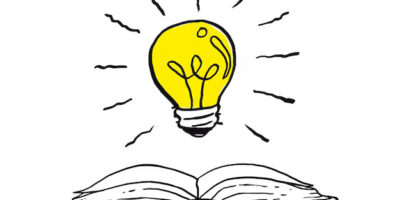Canadian elections at the federal, provincial, and municipal levels are conducted with a first-past-the-post system. Put simply, the candidate with the most votes wins.
On June 12th, 2014, Kathleen Wynne’s Liberal Party of Ontario won a majority government with 38.7% of the popular vote. In contrast, Dalton McGuinty’s Liberals had won a minority government on October 6th, 2011, with 37.7% of the vote – nearly the same as in 2014, but with radically different results. And I’m sure you all remember May 2nd, 2011, when Steven Harper’s Conservatives won the a federal majority with 39.6% of the vote.
In both the 2014 Ontario elections and the 2011 federal elections, a minority of the population selected a majority government, i.e. over half of the votes were not cast for the winning party. In fact the only time in Canadian politics in which a majority government was selected by a popular majority (i.e. over 50% of ballots) was in 1984, in which Brian Mulroney’s Tories won 75% of the seats in the House of Commons with 50.03% of the popular vote.
Meanwhile, Elizabeth May just scraped a seat for the Green Party in 2011 with 3.91% of the popular vote, and the Green Party hasn’t won any seats in Ontario despite having having candidates in every one of the 107 provincial ridings and 4.84% of the popular vote.
From these recent electoral results, the following can be observed:
– Popular support does not translate into seats
– Similarly aligned parties often split the vote trying to out-populist each other
– Theoretically, a party only needs 17% of the vote in a three-party-system to win a majority government. This is unlikely but the fact this possibility exists is absurd.
The first-past-the-post system is elegant, but flawed. Thus there are currently two options being discussed at various levels of government to reform this.
The first option is proportional representation. At its simplest, proportional representation ensures that if 30% of ballots are cast for a party, then 30% of seats in an assembly are granted to that party. Variations include mixed member proportional representation (MMP) in which one vote is cast for a local candidate and one for a political party. The local member would be elected using the first-past-the-post system, and would represent the electoral district. However there would be a number of seats not assigned to any party at all, and the party vote would contribute towards assigning the list seats to each party to ensure roughly proportional representation in the assembly. Furthermore, a threshold of 3-8% may be incorporated to reduce the proliferation of fringe parties. Either way, the Green Party of Ontario may be able to enjoy representation in provincial parliament.
Sadly every single referendum for implementation of electoral reforms through proportional representation has been defeated (BC 2005, PEI 2005, ON 2007, NB 2008, QC 2004, BC 2009).
Another option is ranked ballots. The ranked ballot system is designed so that an elected representative will enjoy at least lukewarm support from a majority of voters, rather than adoration from a minority and outright hatred from the remainder (e.g. a la Rob Ford). With a ranked ballot, a voter numerically ranks each candidate according to preference. When tallying votes, it is first determined whether or not any candidate has over 50% of the vote. If not, then the candidate with the lowest number of votes is removed from the running, and all the ballots which selected the lowest ranking candidate as most preferred would be assigned to their next most preferred candidate. This process continues until one candidate has over 50% of the vote.
Ranked ballots are currently being endorsed provincially as an option for municipal elections.
The third and final option is for voters to throw in the towel, publicly disown the NDP or Liberals, and force Canada to use the two-party system existing in the States. This would almost eliminate vote splitting. Disadvantages unique to this system include decreased voter choice and increased pandering of parties to the majority. This is not desirable, since voter choice is clearly a good thing, and the purpose of a government is not only to serve the needs of a majority, but to protect the needs of a minority. We will not be discussing the two-party system as a viable alternative in this article.
Detractors from electoral reform (either ranked ballots or proportional representation) argue that methods of reform are too difficult for the average Joe or Jane to understand, that they would lead to increased political deadlock, and that they’d allow for increased representation from fringe groups.
However, although I’ve spent over 250 words describing the mechanisms of each system, voting through ranked ballots is literally as easy as 1-2-3. And haven’t you ever really liked a certain candidate but thought their party had strayed too far from their values in a certain election (e.g. NDP 2014)?
As for fringe groups, well, a single MPP from the Communist Party is not going to replace the Maple Leaf with a hammer-and-sickle. An MP from the National Family Party is not going to be able to expel homosexuals from Canada.
Political deadlock as a result of proportional representation is probably the greatest concern, but is no more concerning than that in a minority government. Finland has ten parties in parliament, but they’ve organized themselves into two perfectly functional coalitions. The difference between having many parties organized in a coalition and a party holding a minority government is that members in members in smaller parties are able to offer more diverse views on legislation than members in a few large parties, which must follow the direction of party whips. It would not be a bad thing for opinions in parliament to become less homogeneous, to better represent the variety of views and serve the needs of all Canadians.
In conclusion, the issue of electoral reform in Canada is not dead yet. Proportional representation may resurface in a referendum in a future referendum, and ranked ballots will surely soon be introduced in municipal elections. Keep these issues in mind for when they next reappear.




Ian
ranked ballots are equally undemocratic and nothing more than a gift to the liberals
rorcocobun
I know that is a year late but didn’t you mean a gift to the Liberals, NDP and Green Party as the Conservative Party won’t be able to rely on vote splitting to retain power? On another note, it’s so nice to not have to call Harper our PM, as 61% of the population never considered him their PM in the first place 🙂
Ian
Nah, let’s assume PCs get more votes than liberals (but both roughly 30%) and watch what happens:
Round 1: PCs 1st, Liberals 2nd, NDP 3rd, Greens 4th
Greens are elminated, most of their second choices split between Liberals and NDP
Round 2: PCs 1st, Liberals 2nd, NDP 3rd
NDP eliminated, almost all the vote to the liberals
Round 3: Liberals 1st, PCs 2nd
ranked ballots ensure that median popular party gets 100% of the power. what we need is a system that ensures no party leader can rule by decree. while I’m happy harpy’s gone, Trudeau is our dictator now. we can’t just hope to elect a benevolent one, we need to democratize the system itself.
Michael Hall
Apparently ranked ballots brought McGuinty from the Liberal electorate’s 4th choice to Premier. Does that in retrospect seem such a great system? What it will do is eliminate all the persons with real ideas worth trying and promote the wish-washy ones who don’t have enough ideas to cause disagreement. And look at your Hydro bill and think of McGuinty’s legacy!!!